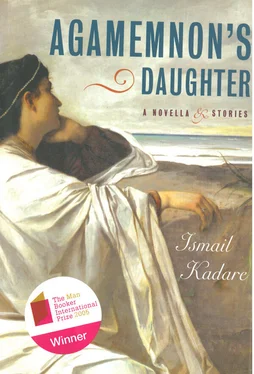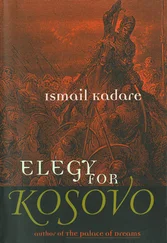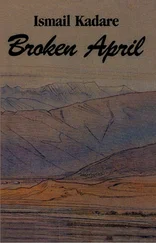It was clear from the start that what was now being put into place would be even more abominable than the campaign against forbidden sects and all previous episodes of the sort. That was because the new campaign’s target was something so abstract it could never be quite pinned down. All the same, everyone grasped the impact it was bound to have. Even when the ax had been supposed to fall only on specific circles, as in the case of the campaign against the sects, or on isolated officials, as in the affair of the anti-state conspiracy, everyone, and all their relatives too, had felt its effect. This time, though, given that the issue related to something as manifestly indefinable as the maleficent or beneficent quality of a person’s glance, and insofar as said quality pertained to something as universal as eyes (everybody had eyes, nobody could claim exemption on grounds of not being concerned), this time people were sure that the new campaign would be of unprecedented scope and violence. It was obvious that the vicious whirlwind would flush out every single suspect and whisk every last one of them off, without mercy, to their fatal punishment.
In homes, offices, and cafes, people spoke of nothing else from early Saturday morning. But just the way things had happened during previous campaigns, this time, too, people talked about the Blinding Order in a manner completely at odds with the dark foreboding that it aroused in their souls. They treated it in an offhand, almost entertaining way. Apparently, people thought that as far as their personal relations were concerned, lightheartedness was the best way to ward off the least suspicion that might have lurked in their own hearts or in others’ that the order might be directed against them as individuals in any way whatsoever. All the same, in the midst of conversations and laughter, a moment would come when eyes would meet and glances freeze into razor-sharp shards of ice. It was the fatal moment when each speaker tried to fathom his interlocutor’s mind: Does he really think I have that kind of eyes?
These tense interludes would last barely two or three seconds. One speaker or the other would relax his stare, and then laughter and chatter would resume with even greater jollity. The discussions mostly focused on the same issue, an issue most people pretended not to take to heart on their own account. Just what were evil eyes? Was there a reliable way of identifying them?
There was a wide variety of opinion on the matter. People referred to the traditional view that the evil eye was to be found typically among light-colored irises and rather less among darker hues, but everyone was also aware that eye color was not itself a sufficient means of diagnosing misophthalmia, especially as the problem arose in a multinational empire where some ethnic groups had eyes — as well as hair and skin — that were more or less dark than others. No, hue was certainly not an adequate criterion, it was just one factor among many others, like squints, or the unusually large or small size of the eyeballs, which could similarly not be considered determining factors. There could be no doubt about it: no single trait, nor any particular combination of them in an individual pair of eyes, offered definite proof of the presence of misophthalmia. No, it was something else, something different. . A peculiar combination of the intrinsic nature of the eye and of the trace its glance left in surrounding space. . Of course, it was rather hard to detect, especially because the order mentioned no specific sign that might be of use in the matter. But if the order itself did not stoop to such minutiae, the special commissions that had been set up in more or less every locality must obviously have been given instructions and precise directions in order to identify this maleficent force and to ward off erroneous interpretations and possible abuses.
At that point in the conversation, people usually stifled an anxious sigh and turned back to lively, light-hearted topics.
That’s how it was in office chatter, in cafes infested with informers, or even in homes when visitors were present. But when people found themselves alone, they would rush to wherever they could find a mirror and stand there for minutes on end. People with dark eyes tried to convince themselves that their pupils were sufficiently dark to clear them of all suspicion. People with light-colored eyes tried to convince themselves of the opposite. But the people who stared longest at the mirror were those with squints, or eyes reddened by an allergy, or by high blood pressure, or by some other ocular irritation, as well as people with eyes bleary from jaundice, bloated from toothache or drink, down to people who suffered from a cataract.
Apart from those who were already blind, nobody could be quite sure he was exempt from the order. As everyone soon realized, that was the source of the qorrfirrnan’s mortal power.
Although some people told themselves they could keep the evil at bay by putting on a happy face and joking about the matter at every opportunity, others began to withdraw quietly from public life in the hope they would be forgotten. They shut themselves up at home, often staying in bed with their heads under the blanket, as they made mental lists of their personal enemies, or of all the people who envied them their jobs in the civil service and who might take advantage of the situation to make some critical remark about them. Among the latter, some tried to get ahead of the game by denouncing their enemies first, hoping that even if they didn’t manage to destroy them in time, they would at least undermine the force of denunciations yet to come.
Meanwhile, as rumors and gossip about the new order reached their peak, steps were no doubt already being taken, admittedly behind a veil of secrecy: the first denunciations must have been made, and the first lists of suspects based on those denunciations must have been in the process of being compiled. A central commission had now been set up and entrusted with the task of directing the campaign. It was provided with myriad branches in every province of the empire. Shortly thereafter, strange new locales sprang up under a name even more bizarre, composed of the Ottoman term qorr prefixed to a word borrowed for God knows what reason from the cursed language of the giaours: the new bureaus were called qorroffices.
People gathered in knots in front of the freshly painted signboards and even though the word qorroffice was most often glossed underneath as “Blinding Bureau” in smaller lettering and in parentheses, passersby almost always asked: What are these offices? And what are they for?
What were they for? That was only too obvious! Are you living on the moon? Didn’t you hear about the latest order handed down by our great sultan, may Allah grant him long life. .
Even so, the precise function of the qorroffices was not made clear right away. Some thought their only function would be to collect denunciations and to pass them on to higher authority; but others — who grasped the fact as soon as they saw deliveries of high-sided cots equipped with straps on their side bars, reminiscent of the gurneys used in hospital operating theaters — easily guessed that the qorroffices would be the very places where eyes would be put out. But in due course, especially at the height of the campaign, the nature of the qorroffices and their true purpose were made entirely plain. Apart from the fact that the offices collected the denunciations, which every subject of the empire could deliver by hand (even though the address of the central commission was widely publicized), these locales were all equipped with an official iron blinding bed, called the qorryatak. However, this piece of equipment was mostly symbolic. In practice the act of blinding was most often carried out elsewhere, except when it turned out to offer an opportunity to teach this or that area or neighborhood or street a much-needed lesson.
Читать дальше












